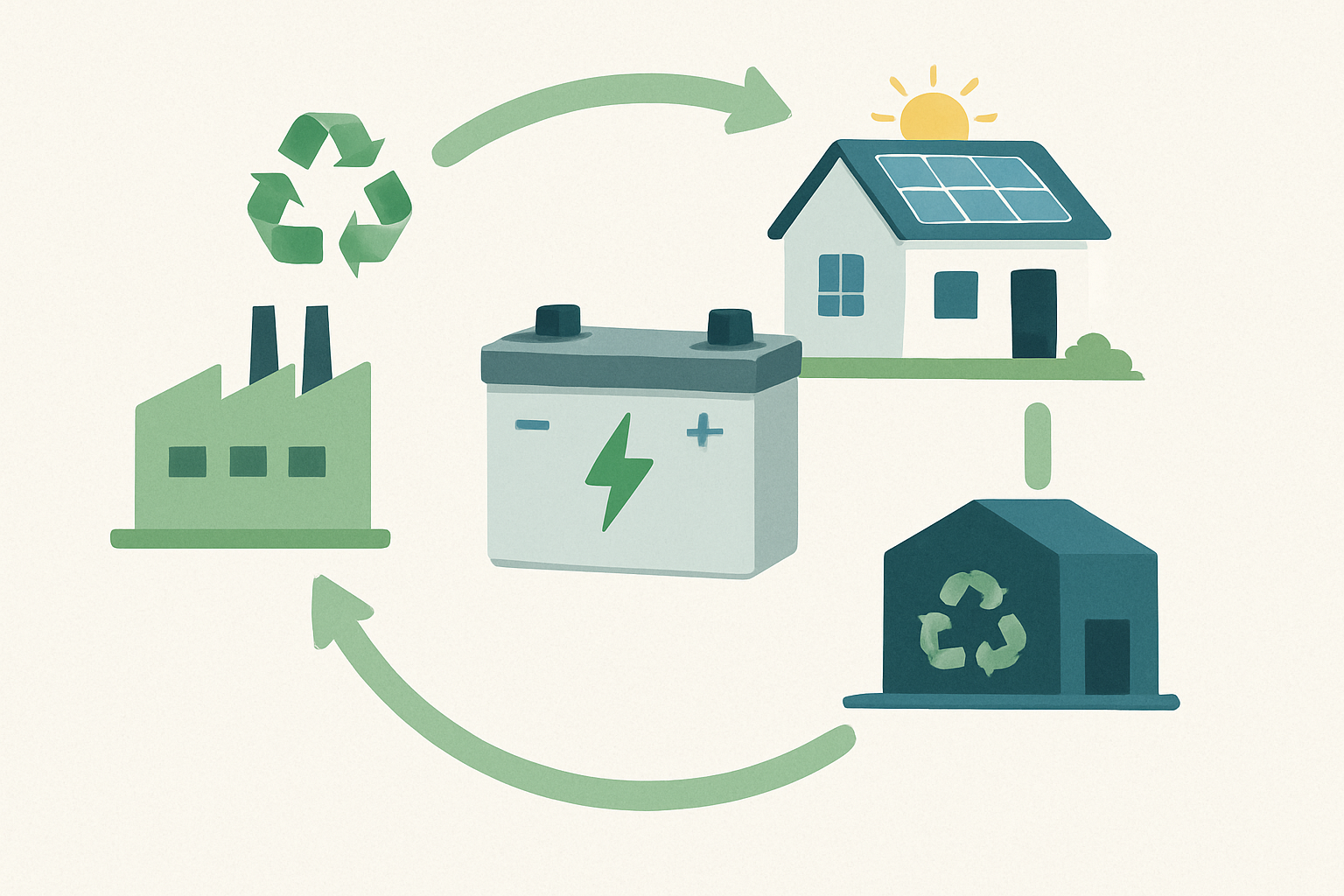The transition to renewable energy relies heavily on battery technology. From electric vehicles to large-scale grid storage, batteries are fundamental. As their use expands, so does the question of their lifecycle. Understanding the environmental impact of battery recycling, particularly its effect on emissions, is crucial. Data from the International Energy Agency (IEA) provides clear insights into the benefits and challenges of this growing industry.
The Growing Need for Battery Recycling
The sheer volume of batteries reaching the end of their initial service life is set to increase dramatically. This creates both a challenge and a significant opportunity for resource management and emissions reduction.
A Surge in Spent Batteries
Projections show a steep rise in the quantity of spent lithium-ion batteries. According to analysis in the IEA's The Role of Critical Minerals in Clean Energy Transitions report, the volume of depleted batteries from electric vehicles and energy storage is expected to grow exponentially, reaching nearly 1,200 gigawatt-hours (GWh) by 2040. This influx makes efficient recycling pathways not just beneficial, but necessary to prevent waste and recover valuable materials.
The Economic Drive
Beyond the environmental imperative, strong economic incentives are fueling the recycling industry. The market for recycled battery materials is expanding rapidly. The IEA has noted that the market value of recycled battery metals grew almost eleven times between 2015 and 2023. This financial momentum encourages investment in new technologies and infrastructure, making recycling an increasingly viable part of the supply chain.
Analyzing the Emissions Impact of Recycling
The primary environmental advantage of recycling batteries is the significant reduction in greenhouse gas emissions compared to producing materials from scratch. This is where the numbers tell a powerful story.
The Core Benefit: Reducing Greenhouse Gases
Extracting and refining raw materials like lithium, cobalt, and nickel is an energy-intensive process with a substantial carbon footprint. Recycling bypasses much of this. The IEA highlights a critical finding: recycled battery metals can generate up to 80% fewer greenhouse gas emissions than primary materials sourced through mining and refining. This stark difference underscores recycling's role in lowering the overall carbon impact of battery technologies.

A Comparative Look: Recycling vs. Primary Production
While recycling processes are not entirely free of emissions—they require energy and produce by-products that need proper management—the net benefit is overwhelmingly positive. The climate advantages of clean energy technologies remain clear, and recycling strengthens this case. Creating a circular economy where materials are reused minimizes the reliance on new extraction, directly contributing to a lower-emissions future.
| Material Source | Relative Greenhouse Gas Emissions | Key Considerations |
|---|---|---|
| Primary Mining & Refining | High | Energy-intensive, significant land and water use, potential for environmental disruption. |
| Recycled Materials | Low (Up to 80% less) | Reduces mining demand, conserves resources, lowers overall carbon footprint of batteries. |
Challenges and Innovations in the Recycling Landscape
The path to a fully circular battery economy is not without obstacles. Technical complexity and regulatory frameworks present ongoing challenges that require innovative solutions.
Overcoming Technical and Regulatory Hurdles
Current recycling technologies face difficulties due to the wide variety of battery designs and chemistries. Separating and recovering materials from complex products can be inefficient. Highly reactive elements such as lithium can further complicate recovery efforts. Additionally, as the IEA points out, regulatory barriers related to the transportation of end-of-life batteries across borders can slow down the development of a global recycling market.
The Role of Technological Innovation
Innovation is key to unlocking the full potential of battery recycling. The IEA's Clean Energy Innovation report identifies advanced battery chemistries and recycling techniques as critical for accelerating CO2 emissions reductions. The increasing number of patents filed for recycling technologies indicates a strong focus on developing more efficient and cost-effective methods for material recovery. These advancements are essential for improving recovery rates and handling a wider range of battery types.
The Future Outlook for Battery Recycling and Emissions
The trajectory for battery recycling is one of growth, driven by both supply of spent materials and demand from manufacturers seeking sustainable inputs. Policy and investment will play a crucial role in shaping this future.
Projected Growth in Recycled Materials
Data from the IEA suggests that by 2040, recycled metals could satisfy a significant portion of the demand for key battery materials. For instance, recycled copper, nickel, cobalt, and lithium from batteries could account for between 6% and 12% of the total demand for these minerals in clean energy technologies. This shift reduces reliance on volatile primary commodity markets and enhances supply chain security.
Policy's Role in Shaping the Future
Government policies are creating a supportive environment for the clean energy sector, which indirectly benefits the recycling industry. As detailed in the IEA's World Energy Investment 2023 report, initiatives like the US Inflation Reduction Act and Europe's REPowerEU plan stimulate demand for batteries and renewable energy, thereby increasing the future pool of materials available for recycling. These policies help build a stable foundation for long-term investment in recycling infrastructure.
Final Thoughts on a Circular Energy Economy
Battery recycling is more than a waste management strategy; it is a vital component of a sustainable energy system. The data clearly shows that recycling significantly cuts down the emissions associated with producing battery materials. By creating a closed-loop system, we can conserve natural resources, strengthen supply chains, and reduce the environmental footprint of the technologies powering our future. Embracing a circular economy for batteries is a practical and impactful step toward achieving global climate goals.
Frequently Asked Questions
How much lower are emissions from recycled battery materials?
According to data highlighted by the IEA, using recycled nickel, cobalt, and lithium can reduce greenhouse gas emissions by as much as 80% compared to producing these materials from mining and refining.
Is battery recycling profitable?
The market is growing significantly. The IEA notes that the market value for recycled battery metals saw a nearly 11-fold increase between 2015 and 2023, indicating strong economic viability and potential for profitability.
What are the main challenges for battery recycling?
Key challenges include complex battery designs, the variety of chemical compositions, regulatory issues with transporting used batteries, and the technical difficulty of efficiently recovering highly reactive elements like lithium.





Leave a comment
All comments are moderated before being published.
This site is protected by hCaptcha and the hCaptcha Privacy Policy and Terms of Service apply.